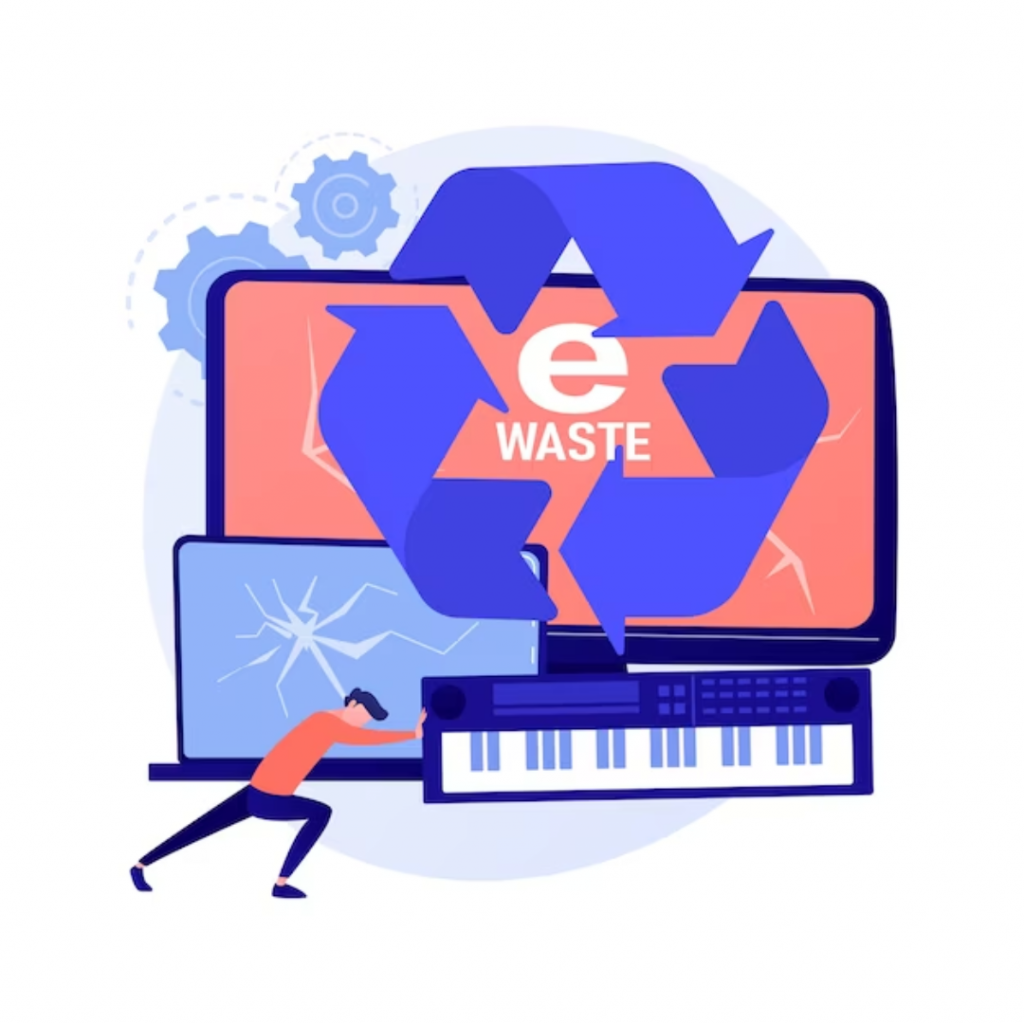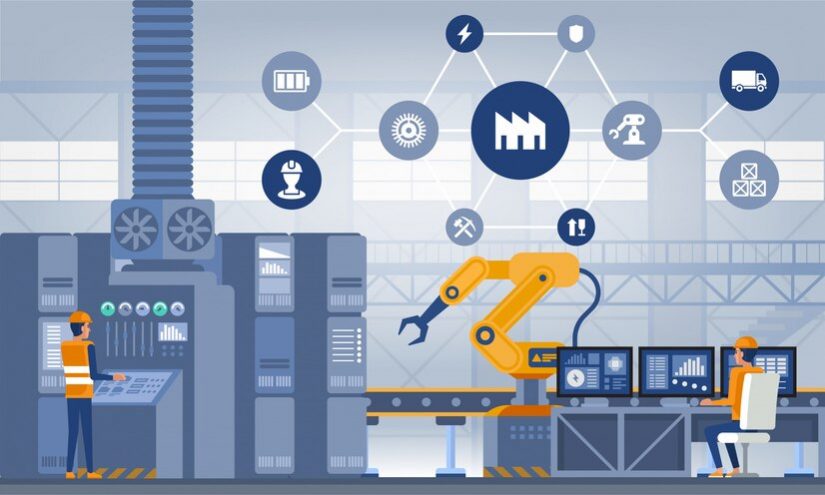Impact of Blockchain Technology on the Environment

Blockchain technology is a decentralised network that uses a distributed ledger to record transactions on multiple computers. It is secure, transparent, and immutable, making it ideal for use in finance, healthcare, supply chain management, and other fields.
Blockchain technology has grown in popularity in recent years due to its potential to revolutionise a variety of industries. However, environmentalists, researchers, and policymakers are concerned about the environmental impact of blockchain technology. The energy-intensive process of blockchain technology, particularly Bitcoin, has resulted in a significant increase in carbon emissions, which contributes to climate change. This blog will look at the positive and negative environmental impacts of blockchain technology, as well as the steps being taken to mitigate them.
Blockchain technology has the potential to have a positive impact on the environment in a variety of ways. However, if not implemented properly, it has the potential to have a negative impact.
Positive Impact of Blockchain Technology on the environment

Energy Efficiency
Blockchain technology has the potential to improve energy efficiency, which in turn has the potential to improve environmental outcomes. The process of reducing energy consumption while maintaining the same level of output or service is referred to as energy efficiency.
The use of smart contracts is one way blockchain technology can improve energy efficiency. Smart contracts are self-executing contracts in which the terms of the buyer-seller agreement are directly written into lines of code. These contracts can aid in the automation of processes and the reduction of the need for intermediaries, resulting in more efficient and streamlined processes.
Smart contracts, for example, can be used to automate the process of buying and selling energy between producers and consumers. As energy can be sold directly to consumers in the same locality as the producer, this can help to reduce the amount of energy wasted due to transmission losses. This can also lead to fewer intermediaries, such as energy brokers, resulting in more efficient and cost-effective transactions.
Blockchain technology can make it easier to use peer-to-peer energy trading platforms, where people can buy and sell excess energy generated by renewable sources like solar panels. These platforms can aid in the promotion of renewable energy sources and the reduction of reliance on nonrenewable sources such as fossil fuels.
Furthermore, by providing a transparent and secure platform for tracking energy usage and distribution, blockchain technology can improve the efficiency of energy grids. This can help to reduce energy waste and improve overall energy system efficiency.
Renewable Energy
The use of renewable energy sources is another solution to the environmental impact of blockchain technology. Many mining operations are situated in areas with abundant renewable energy sources, such as hydroelectricity and geothermal energy. The carbon emissions associated with Bitcoin mining can be significantly reduced by powering mining operations with renewable energy. Furthermore, some blockchain networks, such as the Energy Web Chain, are intended to encourage the use of renewable energy sources. The Energy Web Chain employs a PoA (proof-of-authority) consensus mechanism that necessitates validators holding a specific number of renewable energy certificates (RECs). Validators are then chosen based on their REC holdings to validate transactions and create new blocks, incentivizing the use of renewable energy sources.
Other measures, in addition to renewable energy, are being implemented to reduce the environmental impact of blockchain technology. Some blockchain networks, such as IOTA, use a Tangle consensus mechanism, which uses significantly less energy than PoW or PoS. The Tangle is lightweight and scalable, making it ideal for applications requiring quick and efficient transactions.


Sustainable Supply Chain Mnagement
Blockchain technology can be used to improve supply chain transparency and traceability. By allowing for better tracking of materials and resources, this can help to identify and reduce the environmental impact of supply chains. The process of managing the environmental, social, and economic impacts of supply chain activities is referred to as sustainable supply chain management.
Blockchain technology can aid in the management of sustainable supply chains by providing a secure and transparent platform for tracking supply chain activities from the source to the end user. Transparency in the supply chain can help to ensure that activities are carried out responsibly and sustainably, reducing negative environmental impacts such as deforestation, pollution, and waste.
Blockchain technology, for example, can be used to track the origin and movement of raw materials used in manufacturing processes, ensuring that they are sourced responsibly and reducing the environmental impact of extraction activities. Blockchain technology can also aid in the tracking of products as they move through the supply chain, ensuring that they are transported efficiently and sustainably.
Furthermore, blockchain technology can make it easier to apply circular economy principles in supply chain management, which is a waste-reduction model based on recycling and reusing materials. Blockchain technology, by tracking the movement of products through the supply chain, can facilitate material reuse and recycling, reducing waste and minimising negative environmental impacts.
Negative impacts of blockchain technology on the environment:

Energy Consumption
To validate transactions and keep the network secure, blockchain technology necessitates a significant amount of computing power. This computing power results in a high demand for energy, which can have a negative impact on the environment. The energy consumption associated with blockchain technology is a source of concern, especially if the energy is derived from non-renewable sources.
The majority of the energy consumed by blockchain technology is related to mining activities, which is the process of validating transactions and adding them to the blockchain ledger. Mining necessitates powerful computing equipment, and the more powerful the equipment, the more energy it consumes. Bitcoin, the largest and most well-known blockchain network, is estimated to consume as much energy as Argentina itself.
Blockchain technology’s energy consumption impact may contribute to greenhouse gas emissions and climate change. The majority of the energy used to power blockchain networks comes from non-renewable sources like fossil fuels. This energy consumption can raise electricity prices and reduce power availability for other essential needs.
E-Waste
Blockchain technology has the potential to increase e-waste, which can have a negative impact on the environment. E-waste is a term that refers to discarded electronic devices such as computers, smartphones, and servers. As blockchain technology becomes more widely adopted, older hardware may become obsolete and must be replaced in order to meet the demands of blockchain technology.
Mining activities are a significant contributor to e-waste in the context of blockchain technology. Mining activities are used to validate transactions on some blockchain networks, such as Bitcoin. These mining activities necessitate a significant amount of computing power and can generate e-waste as older hardware becomes obsolete and must be replaced with newer, more powerful hardware.
Several solutions can be considered to address the e-waste impact of blockchain technology. One approach is to increase mining efficiency by using more energy-efficient hardware and renewable energy sources. Another approach is to build blockchain networks that rely on different consensus mechanisms rather than energy-intensive mining. Furthermore, recycling and proper disposal of electronic devices can aid in reducing the negative environmental impacts of e-waste.


Mining Activities
Mining activities related to blockchain technology can have serious environmental consequences. The process of validating transactions and adding them to the blockchain ledger is known as mining. This process necessitates a significant amount of computing power and energy, which can have a negative impact on the environment.
Energy consumption is one of the most significant environmental impacts of blockchain mining activities. To power the computing equipment used in the validation process, mining necessitates a significant amount of energy. This energy consumption can contribute to greenhouse gas emissions and climate change, especially if it comes from nonrenewable sources like coal or natural gas.
Mining activities can also generate e-waste because older hardware becomes obsolete and must be replaced with newer, more powerful equipment. E-waste can harm the environment because it contains hazardous materials like lead and mercury.
Furthermore, mining activities related to blockchain technology may have a negative impact on local communities. Mining activities in some areas have resulted in community displacement, deforestation, and water pollution.
Various solutions can be considered to mitigate the negative effects of mining activities associated with blockchain technology. Using renewable energy sources to power mining operations, for example, can reduce greenhouse gas emissions and the environmental impact of energy consumption. Improving mining efficiency through hardware and software improvements can also reduce the amount of energy required for blockchain networks.
Conclusion
Finally, the environmental impact of blockchain technology is determined by how it is implemented and used. Blockchain technology, when used responsibly, has the potential to improve the environment by increasing energy efficiency, promoting renewable energy, and improving supply chain sustainability. However, concerns about the energy consumption associated with blockchain technology, as well as the potential for e-waste and negative mining activities, must be addressed.







